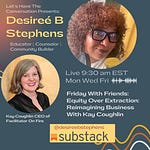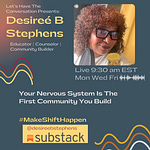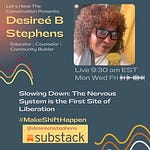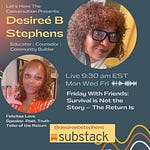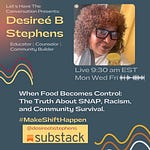There’s a moment when awareness hits the body before it reaches the brain.
That drop in your stomach, that heat in your chest, that quick rush to defend—
that’s not guilt. That’s your nervous system trying to protect you from shame.
But awareness is not punishment.
It’s an invitation—to stay human when it would be easier to collapse.
3 Talking Points
1. The Moment of Realization: When Awareness Feels Like Threat
When you first recognize you’ve caused harm, your body doesn’t register “I’ve learned something.”
It registers danger.
Your chest tightens, the shame spirals, and you rush to defend: “I didn’t mean to.”
That’s the nervous system’s attempt to protect you from shame.
But accountability begins where defensiveness ends.
Reframe:
Awareness is not punishment. Awareness is an invitation to choose relationship over self-protection.
Somatic Reflection (20 sec):
Hand to sternum. Whisper:
“I can face this without collapsing.”
Let your shoulders drop one inch. Feel that as expansion.
2. Intention Is Information, Not Immunity
You can mean well and still cause harm.
Supremacy culture conditions us to believe that good people can’t do harm—
so when we do, we scramble to prove our innocence instead of sitting in the truth.
Reframe:
Accountability isn’t about proving you’re good. It’s about choosing to stay in relationship even when you’re uncomfortable.
Somatic Reflection (25 sec):
Locate where your body wants to contract—jaw, belly, throat.
Breathe into that place without forcing the breath.
Ask:
“What happens if I let go of needing to be seen as good?”
3. Repair Is the Practice, Not the Performance
When you’ve caused harm, your nervous system seeks three exits:
Collapse (“I’m terrible”),
Defensiveness (“You misunderstood me”),
or Withdrawal (“I’ll step away to protect you”).
Each feels like care, but all three re-center you and interrupt repair.
Reframe:
Repair is not an apology; it’s the willingness to stay.
Somatic Reflection (30 sec):
Hand to the back of your heart.
Whisper:
“I can stay with this truth. I am not my mistake.”
Let the body learn that discomfort ≠ danger.
Practice Your Praxis
Self — Stay With the Sensation
When guilt rises, pause before you explain.
Notice the part of you that wants to be seen as “good.”
Hold that part gently; don’t perform it.
Home — Model Repair Aloud
When harm happens, say:
“I see how that landed. I didn’t mean to, but I take responsibility.”
Let those words become muscle memory.
Work — Stay in the Room
When feedback comes, resist the urge to fix or flee.
Say internally:
“This is information, not annihilation.”
Respond with curiosity, not correction.
💛 Community Deep Dive
Embodied Accountability: The Path from Awareness to Action
In this section (for paid subscribers):
The full transcript on how to move through collapse and return to connection.
Guided somatic anchor: “The Back-of-Heart Breath” for staying in discomfort.
Community reflection prompts for your next circle or cohort.
A downloadable “Repair Map” you can use in your relationships, teams, or DEIA work.
$10 a month $100 a year (2 months free) $150 as an equity partner. Scholarships always available at: Scholarships@DesireeBStephens.com



